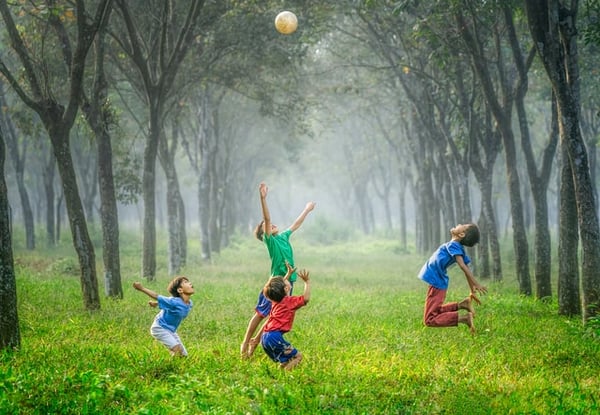How to Create a Mindful Classroom
by Brianna Richard, on Sep 22, 2021 11:14:51 AM
If you haven’t started incorporating mindfulness into your classroom, now is the time to do so. Teachers, students, and parents have all experienced stress, trauma, and change during the course of the pandemic. Mindfulness is a strategy that can help to mitigate that stress and help the emotional wellbeing of both teachers and students. Mindfulness can be described as the ability to be present, in the moment, and aware of what is going on around us. It is the ability to not be overly reactive to situations or feel overwhelmed by what’s to come. (Staff, 2020)
 Photo by Robert Collins on Unsplash
Photo by Robert Collins on Unsplash
Mindfulness is a skill that both teachers and students can benefit from and that is a fact that is backed by science. According to Mindful.org, research shows us that practicing mindfulness has a positive effect on your mental health, physical health, and personal relationships. It can result in enhanced performance, stress reduction, and elevated attention to our well-being and the well-being of those around us. Here are 4 ways to create a mindful classroom that both students and teachers can benefit from. (Staff, 2020)
Teach your class to breathe
Breathing mindfully is an easy way to incorporate mindfulness throughout the school day. Start off by teaching students to breathe by putting their hands on their stomachs and imagining that they are holding a balloon. On the in-breath have students expand their stomachs or balloons and deflate on the out-breath. Once students have mastered the technique, have students breathe mindfully throughout the day. I like to have my students do this after lunch, in between classes, or even when I am passing out papers. Don’t forget to breathe with them!
Teach mindfulness and movement
Movement is a fantastic way to promote mindfulness in both students and adults. It is a necessary brain break kids need on a long school day. Pick one yoga move like downward-facing dog or tree pose. If you aren’t a yogi, practice on your own before introducing it to the class. The pose doesn’t need to be elaborate and complex, just something simple that kids can do while taking deep breaths.
Teach mindfulness through gratitude
Practicing gratitude is a powerful exercise for both kids and adults. It is a simple way to remind us of the things that truly matter. Lots of classrooms have gratitude corners. Suppose a student is having a hard day. Instead of sending them outside to sit on the bench or write lines, try sending them to the gratitude corner. Have them write a few things down they are grateful for and practice breathing while they are reflecting on them. You can put a big box or jar in your gratitude corner to collect responses. It is a simple act that makes a big difference.
Get parents involved
Students are not the only ones that need to be more in the moment and battle the stressors of life. Share information about mindfulness on Bloomz. You can post positive quotes for parents to read or mindful activities families can participate in. If parents spend a little bit of time working on breath, gratitude, and mindfulness at home, it will make a big difference at home.
Do you practice mindfulness with your class? Share your strategies in the comments below.
Sources:
- Staff, M. (2020, July 8). What is Mindfulness? Mindful.Org.
- Shardlow, G. (2015, November 18). Integrating Mindfulness in Your Classroom Curriculum. Edutopia.



